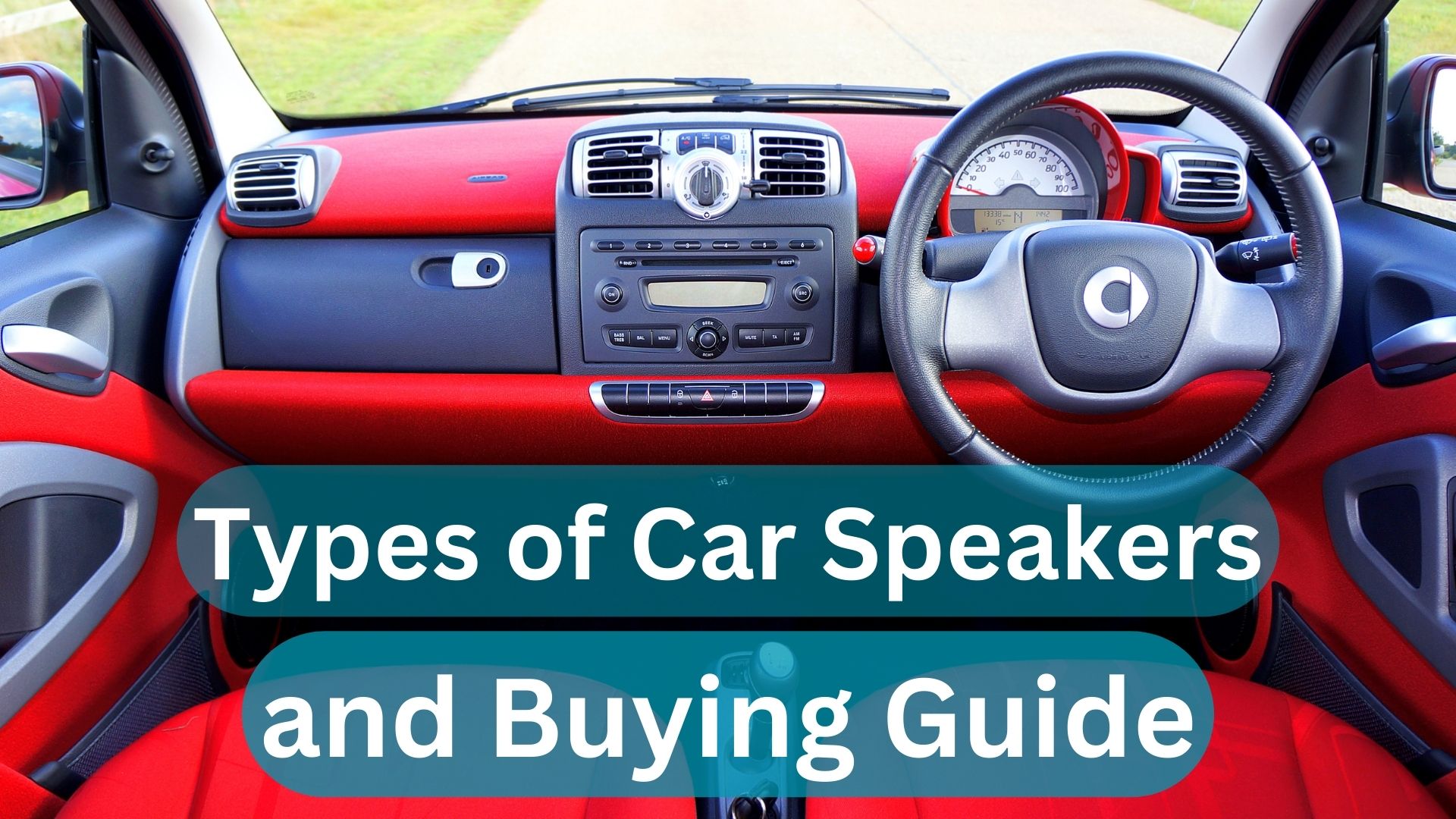Coaxial Speakers
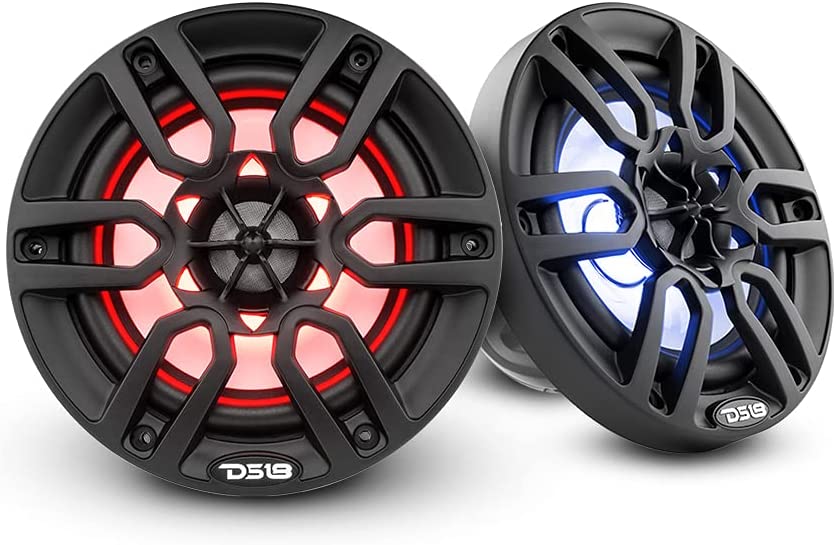
A.K.A full range speakers are the most common type of speakers for cars and are the kind that is most often used in vehicles. This kind of car speaker usually has the tweeter built into the woofer, or in extreme proximity to it, which makes all the sound seem to like is coming from a single source.
Full-range car stereo speakers may not provide the same level of quality as component speakers, but there are some extremely high-end coaxial speakers that offer great quality. Most of the factory-installed speakers in cars are full-range speakers, but they do not represent the high levels of sound quality that full-range speakers are capable of producing.
One of the big advantages of using coaxial/full-range speakers is that they are designed to replace factory-installed speakers without making any changes to the setup or the interiors of your vehicle. These speakers do a great job for most people, however, if you’re the kind of speaker enthusiast who wants only the best sound quality, then you might want to consider component car speakers.
Component Speakers
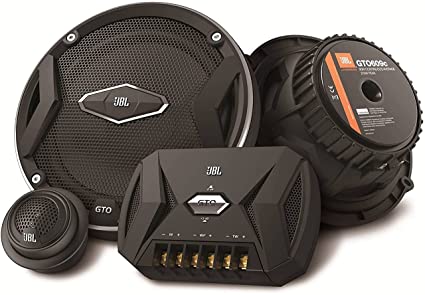
Unlike Coaxial speakers, component speakers are designed to allocate audio frequencies to separate speaker types. In this setup, the tweeter is almost always separate from the mid-bass driver, and the entire setup typically consists of a pair of tweeters, mid-bass woofers, and some crossovers. Here the audio frequencies that each speaker produces are limited, thereby resulting in more realistic and precise sound production.
Although the above-described setup is the standard, it is by no means the only setup. Users can get as crazy as they want by adding mid-range speakers for cars so that woofers can shift focus and the resultant outcome is greater sound quality from each speaker. To achieve even further sound enhancement, users can add super tweeters and sub-woofers. While super tweeters are designed to pick up the highest frequencies, sub-woofers are designed to reproduce low-range bass frequencies that fall within 20-200 hertz. However, it is important to keep in mind that all that bling doesn’t come cheap.
High-end Component speakers for cars are a lot more expensive than good coaxial speakers. Also, installing component speakers often requires major modifications to the interiors of your car, to make room for all the various speaker types, wires, and accessories.
Other Important Stereo System Features & Accessories
Tweeter
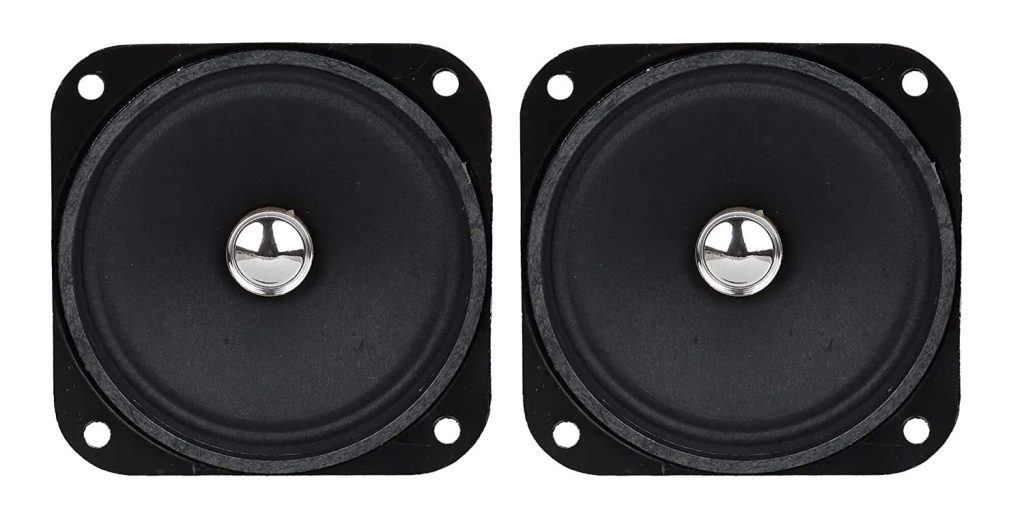
These loudspeakers are designed to produce high audio frequencies in the 2,000 to the 20,000-hertz range. But, more importantly, they are largely instrumental in reproducing the higher frequencies in music, such as the vocals, guitar riffs, violin, sax, flute, and other instrumental notes, to make the music dance. Besides this, they are also a key component that contributes toward proper sound staging and stereo separation. These are the basic processes involved in dispersing the music all around the listener so that they don’t feel like sounds are coming from underneath them or from near their feet. Tweeter design, shape, and materials are hugely responsible factors that influence the effectiveness of the tweeter.
Super tweeter

In layman’s terms, these car stereo speakers serve to further supplement the sound produced by tweeters and enhance the overall sound quality of the music. Like tweeters, these speakers are designed to produce extremely high-frequency sounds. However, they are usually used in large component systems that have several drivers. They are excellent at further reproducing the sound generated by tweeters and filling the gap of sound distortion that is left many times by even the best tweeters.
Mid-range speakers
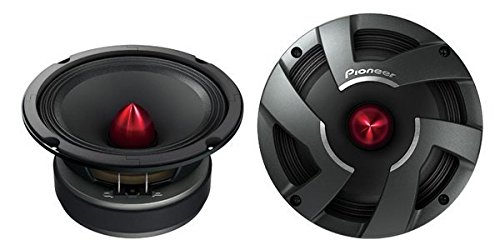
Mid-range speakers for cars serve to enhance and reproduce the most significant and essential sounds covered by instruments and human vocals. Although fundamental and familiar to the human ear, these basic sounds are the most subject to distortion in most loudspeakers. The mid-range speakers produce sounds in the frequency range between 300-5000 Hz and serve to correct those distortions and discrepancies.
Woofer

While the label “tweeter” has its origins in the high-pitched tweeting sounds made by birds, the “woofer” gets its name from the low-frequency barks of dogs that make a “woofing” sound. These low-frequency car stereo speakers are designed to produce sounds in the 40- 1000 Hz frequency range. Like tweeters, Woofers are also preferably made using lightweight materials. Polypropylene and certain woven fabrics are useful materials that produce perfect bass sounds.
Sub-Woofer

Subwoofers reproduce even lower-range bass frequencies than most woofers can produce. For most subwoofers, the range of low bass frequencies they produce lies within 20 to 200 hertz. In some particular systems, that range falls even lower to about 80 hertz. Their main purpose is to extend the low-frequency range of loudspeakers that cover higher frequency ranges.
Crossover
Simply put, audio crossovers are electronic filters that split an audio signal into separate frequency bands that can then be scattered to different may (tweeters, super-tweeters, woofers, sub-woofers) in a car systems that are designed to produce sounds in particular frequency ranges. Most coaxial car speakers have a little crossover built in between the tweeter and woofer cone.
Car Speakers Buying Guide
Looking for clarity and a step–by–step process for selecting the best car speakers for your car stereo? Our guide covers all the relevant aspects and features of car speakers in detail to help you make the most informed decision during your research. Also, check out our car speaker reviews for a clear, quick, and easy assessment of the top car audio speakers of 2018.
1. Sound quality:
As we mentioned above, there are two types of speakers for cars: coaxial and component speakers. While coaxial speakers don’t provide the highest level of sound quality that component speakers present, they are extremely easy to install and are designed to replace the OEM (Original Equipment Manufacturer) speakers that you’re vehicle came with. On the other hand, component speakers provide incredibly precise and accurate sound quality through various setups including using mid-range speakers, woofers, sub-woofers, and even super tweeters. However, these speakers do not fit the DIY installation process and may require major overhauling of the interiors of your vehicle to accommodate wiring as well as all the different speakers.
If your desire is to get the highest sound quality, then component speakers with their higher price tag are your best bet, but if you’re okay with a good level of quality and want the job done quicker, then you should stick with the less expensive coaxial speakers.
2. Frequency range
Another important factor is the frequency range of the speakers. The greater the range, the more complex sounds the speakers are capable of producing. For most speakers for cars, the peak frequency that they can produce is usually 20,000 Hertz, while the lowest is around 10 Hertz. Although the entire range of frequencies is not required, you can purchase speakers that produce the whole range. However, you should know that as we get older, the upper limit of the range of frequencies we can hear begins to shrink and for the most part we cannot even pick up on the extremely high frequencies.
3. Sensitivity rating:
In layman’s terms, sensitivity rating measures the speaker’s ability to convert power from an amp (short for the amplifier) into sound. What that implies is that, if you’re working with a poor-quality factory stereo with low power output, then you’re going to need speakers with a higher sensitivity rating, however, for most quality, branded car stereos or external amps, speakers with low-sensitivity ratings are a good match.
4. Power capabilities:
This refers to the power handling capacity of your chosen speakers. The car speakers you chose should be able to handle the power that your head unit or amplifier produces. This is why it is wise first to select a head unit and amplifier before purchasing your speakers, although you can also get your speakers first and then find a head unit and amp that will best match them. The amount of power that your speakers can process is measured in watts, and the most common measurement is RMS (root mean square value).
5. Frequency Response and Music Tastes:
Frequency Response describes the range of audio frequencies, tones, and beats that a speaker can generate. Every sound has a frequency, whether it is low bass as in rap, or high treble as in techno and EDM. Since frequency response dictates the range of sounds of different frequencies that a product is capable of producing; it is good to get a car speaker with broad frequency response. Preferably one that has a range between 18 Hz to 20,000 Hz so that you can enjoy a wide variety of music, tones, and beats.
6. Speaker Configuration:
Most vehicles today come with pre-installed OEM, factory-manufactured speakers for cars. And, unless you’re driving a vintage, the chances are that your car already has a set of speakers that are built into the deck and doors of your vehicle. It is worthwhile to learn a little about the speakers that are already installed in your car before you shop for new ones to replace them.
If you’re not up to doing your homework on the speakers and measuring them, don’t worry. Most car speakers and stereo dealers and manufacturers will be able to give you the specs of your speakers. All you need to do is provide them with the vehicle make, model, year, body, and trim and they will give the score on the entire 9 yards of your speaker’s configuration and specs.
7. Speaker Sizes:
There are a wide variety of car speaker sizes to choose from. Car speaker sizes vary between as small as 1 – 2 inches up to 6”×9” configurations. Tweeters are the smallest sizes of car speakers that fit into a larger setup of speakers. Then come the mid-high-range speakers that measure between 2-3.5 inches. These speakers are designed to fit into the dashboard of your car and serve to complement that larger ensemble of speakers in the car.
The 5 and 5.5-inch speakers make for great stand–alone speakers for your vehicle. These are versatile and produce a broad range of sounds as well as fit in several ports in your car. However, they are not so good at producing low-bass sounds.
The 6.5-inch speaker is the most common and popular car speaker size. These speakers are extremely versatile and can provide a whole range of sounds from low bass to high frequency. They are most commonly used in most car models and, therefore, are the easiest to find and replace.
The 6”× 8” speaker, although not as common or widespread is an excellent overall speaker that is capable of producing a broad range of sounds. However, the installation of these speakers may require some modifications to the interiors since only a few cars makes and models come configured for this speaker size.
Finally, the 6” × 9” speaker has an extremely high power handling capacity and is the ideal bass speaker size. For certain car models, you might need to some modifications to accommodate these speakers, but for the most part, they are designed for several models. Owing to their extremely high power handling capacity, they also consume more power and therefore are best suited to stereo and external amps that can match their power output.
8. Speaker Materials and Build-Quality:
Speaker materials matter and don’t let anyone tell you otherwise. The materials used for the cone have a crucial impact on the sound and range of frequency that is produced. To understand why this is, let’s take a closer look at the fundamental mechanics of how a speaker works to create sound waves. An electric current from the stereo or amp flows into the voice coil attached to the inner part of the speaker’s cone which sits just in front of a permanent magnet. The electric current transforms the voice coil into an electromagnet which either repels or attracts the permanent magnet which in turn pushes or pulls the cone of the speaker, thus producing sound waves.
The forward and backward motion of the cone of the speaker is what ultimately creates sound. Flexion has a lot to do with the quality of sound that is produced by the speaker. At certain frequencies, the cone of the speaker tends to flex which in turn distorts the sound. Good quality materials such as polypropylene, clay, mica, or metal-coated synthetic fabrics as well as fiber polymer lend rigidity and help to arrest flexion and prevent the distortion of sound. Other materials such as paper, glass, foam, and textiles are a secondary option and do not do the best job at keeping flexing to a minimum. For the best sound quality, and variety in frequency, it is best to choose speakers built using polypropylene, clay, mica, or other metal-coated synthetic fabrics.
9. Cost:
Even the Top 5 Best car speakers are pretty easy on the pocket, and the top brands quote reasonable prices for their products. Although there is a stark difference in price between component speakers and coaxial speakers, for the most part even the best pair of component speakers won’t cost you more than $150. All said and done; you can purchase a wicked pair of coaxial speakers for no more than 30$. Check out our latest speakers for cars in our car speaker reviews.
Best Car Audio Brands
JBL
JBL’s impact on the world of audio and entertainment is perhaps the greatest achievement of any company in the history of television. From Woodstock to recording breaking tours by the world-famous band U2, JBL has played a pivotal role in how people around the globe experience music. Their innovations in audio engineering and sound technology are the stuff of legends and have shaped the way in which music and entertainment interact with audiences worldwide. They are without a doubt, one of the time best car audio brands.
Boss
Boss audio systems have become synonymous with amazing sound quality and the best clarity and accuracy. Like its homophonic cousin Bose, Boss to needs no formal introduction. Boss speakers and audio systems have one of the largest product lines with over 500 products in the last 28 years that are sold in over 130 countries worldwide. BOSS Audio, BOSS Marine, and BOSS Power Sports are top-selling brands showcasing several top-selling products in many major regional, national, and international storefronts and online retailers.
Pyle
The Pyle Audio company was founded in the 1960s. Since then it has grown to become one of the best car audio brands in the world. Ingenuity, innovative design and engineering, and professional service are some of the hallmarks of Pyle. Ever since its aggressive expansion into the competitive car audio market in the early 2000s, the United States has been compelled to take quick notice of its superior and professional audio products, including speakers, woofers, and other audio products.
Rockford
Jim Fosgate, the founder of Rockford Fosgate, is one of the pioneers of car audio technology. He was one of the first audio fanatic geniuses to envision and create an amplifier for the car that would run low impedance loads. His ingenuity and imagination led to the creation of the all-important PUNCH EQ; a patented technology that would change the development of car amplifier systems for years to come as well as revolutionize the best car audio brands.
Pioneer
As clichéd as this may sound; since its inception in 1938, Pioneer Electronics USA has been pioneering all kinds of electronic systems, especially stereos, and speakers for almost half a century. Since the old days, when the founder Nozomu Matsumoto himself would work on building and innovating speaker designs in his garage, the company has come a mile to manufacture and provide some of the highest quality stereo and audio products that truly resonate with people.
Conclusion
We hope this comprehensive guide has been helpful in choosing the best car speakers for your vehicle. We are always updating our content with new and relevant updates to provide you with the best possible car speaker reviews and resources.
Car speakers are a great investment that will serve you well for miles on the road. Take time to read our best car speaker reviews, and consult our guides on installation and speaker size to learn what fits your car best. Also, don’t forget to check out our blog for more detailed articles that will help you make the most of our car audio experience. For any queries, or questions relating to car speakers, feel free to email us or fill in the contact form below and we will respond as soon as possible.
Pick the right speakers and enjoy long hours on the road for years to come.
Cheers,
